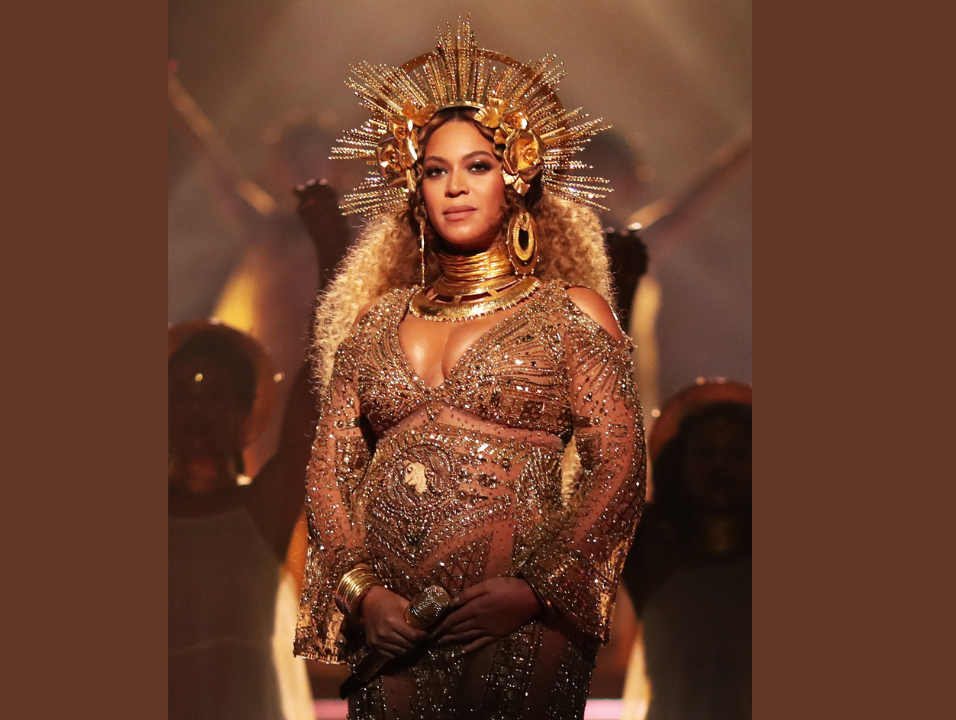Cultural traditions surrounding fertility are still strong with us today. Even pop culture icons like Beyoncé embrace the long tradition of venerating icons of fertility by coming one herself at the 2017 Grammy Awards. To celebrate the Spring season and its promise of renewed life, let’s look at female icons of fertility from every inhabited continent in the world.
Africa
Oshun is one of the most beloved deities of the Yoruba religion in Nigeria. If she is respected and properly flattered, she holds the keys to love, beauty, and fertility. Oshun was brought into existence by Olodumare, the Supreme Creator, when he realized that the world he’d created lacked sweetness and love. One Yoruba myth suggests that humanity wouldn’t exist without Oshun. Associated with running water, she brought life to humanity. (Oshun inspired Beyoncé’s now famous “goddess” costume from the 2017 Grammys.)
Asia
Zhu Sheng Niang Niang is a patron of fertility in Taoist culture. She governs all aspects of pregnancy, labor, and birth. In Chinese, her name literally translates to “[the deity] who watches over birth.” Believed to protect both mother and child, Zhu Sheng Niang Niang was traditionally venerated by clans in southern China such as the Hokkien and Teochew. Today, many childless couples still turn to Zhu Sheng Niang Niang with offerings of red eggs and face powder, hoping she will help them conceive a child.
Europe
Juno was the protector of the people of Rome, especially its women. Roman women called on Juno to protect their marriages and grant them healthy pregnancies. She was also the wife of Jupiter, the god of sky and light. In one legend, Jupiter created his daughter, Minerva, by splitting open his head. Juno was jealous of Jupiter for not needing her to have a child. So, she decided to bear a child without a man’s help. She went to Flora, the deity of plants. Flora gave Juno a magical flower and Juno became pregnant the moment she touched it. Juno then gave birth to Mars, the deity of war.
North America
In the Mayan culture of Central America, Ix Chel was venerated as the deity of the moon, fertility, and death. She had two personas: a young woman and an old crone. Ix Chel had many names including “Lady Rainbow” and “Great End.” Her names might appear to be opposites, but in Mayan culture rainbows are bad omens. Ix Chel was a creator deity and was associated with a wide range of areas including weaving, spiders, water, healing, divination, destruction, as well as with sex and childbirth.
Oceania
Anjea is a spirit/deity in the aboriginal tribes on the Pennefather River in Queensland, Australia. When a child is born, it is believed that a part of its soul resides in the afterbirth. The placenta is carefully buried in the sand near a river and marked with a small cone of sticks and twigs. When Anjea passes by and sees the marker, she takes the piece of soul and sets it in the hollow of a tree where it waits until its other half eventually passes away. In an act of reincarnation, Anjea retrieves the soul fragment, mixes it with mud and places the infant in the womb of a future mother.
South America
Mama Uqllu of Inca mythology was revered as a mother deity of fertility. She helped the Inca people by educating them alongside her brother. The two taught the people how to build better homes and Mama Uqllu showed the Inca women the art of spinning thread and sewing. She also taught the women about science and domestic care. According to legend, Mama Uqllu and her brother were given a golden scepter to help them find the right place to settle with the Inca people. When they came to a valley, the scepter sank into the soil and disappeared. This location became the city of Cuzco, thus founding the Inca Empire.
Resources
https://www.vice.com/en/article/3kjepv/how-to-invoke-oshun-yoruba-deity-orisha
5 Things to Know About Oshun, Inspired by Beyoncé’s Grammy Performance
https://singaporemotherhood.com/articles/2017/07/praying-zhu-sheng-niang-niang-baby/
https://junofertility.com/hello-june-welcome-juno-fertility/
https://en.wikipedia.org/wiki/Mama_Ocllo
Photo Credit: Christopher Polk/Getty Images for Naras; The Washington Post





